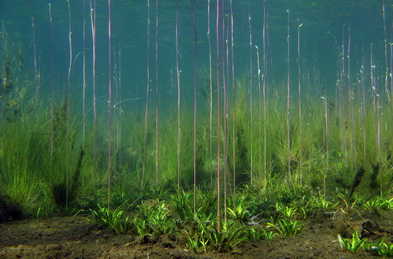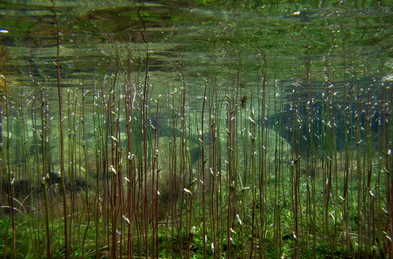Ecology of lobelia lakes
Lobelia lakes are probably the most common type of
lake in Scandinavia and these are named after Lobelia dortmanna which is a key-species of the underwater
vegetation. The lakes are naturally extremely nutrient-poor, low in carbonates
and highly transparent. Elodeid species such as pondweeds and water milfoil never
dominate the vegetation as these species require some bicarbonate to be present
in the water. Instead, the vegetation is dominated by L. dortmanna, Littorella uniflora, Isoetes lacustris, I. echinospora
and some other rare types of isoetids that all rely on sediment-derived CO2
for photosynthesis.
Projects are offered both at BSc and MSc levels and may have a strict laboratory focus using advanced microsensor techniques to reveal the exciting eco-physiology of key species. You may also choose a more field-based approach in order to better understand the natural distribution and how this relates to e.g., catchment, land use, soil types, lakes size and other parameters that can be quantified using GIS.
Lobelia dortmanna growing intermingled with Juncus bulbosus in a Norwegian lobelia lake. In the present lake, the sediment seems muddy and rich in organic matter. Muddy sediments usually have adverse effects on L. dortmanna but the plants seem to do well.
In Denmark, we only have few lobelia lakes when compared to e.g., Sweden and Norway. The reason is that the soils in Denmark are mostly carbonate-rich and thus the water chemistry does not fit the requirements of the isoetids. However, in the north-western part of Jutland in Nationalpark Thy, the numerous shallow water bodies host rich populations of particularly Littorella and Lobelia. Moreover, these natural habitats are threatened by eutrophication and more recently also brownification (see other project) and hence there a great need to further understand the exciting ecology of these species in order to propose effective management plans to the Nationalpark. Interestingly, global warming will also impact the distribution of isoetids since nutrients are used more efficiently at higher temperatures (re-cycling) and brownification may also intensify with increasing temperature.
Come and help us to preserve the few lobelia lakes which are still found in Denmark!
See the list of publications for articles on this exciting topic!
Contact Ole Pedersen for more information.


